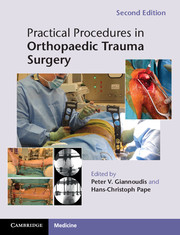Book contents
1 - Fractures of the clavicle
Published online by Cambridge University Press: 05 February 2014
Summary
Indications
Open fracture.
Painful non-union.
Associated injury to the brachial plexus and/or subclavian artery.
Floating shoulder.
Bilateral fractures.
Multiple-injured patient.
Soft tissue interposition between the fragments.
Impending skin necrosis or penetration from a prominent fragment.
Consideration for surgical fixation should be given to completely displaced, comminuted midshaft fractures that contain a transverse fragment (Z-shaped fractures). There is evidence in the current orthopaedic literature that these fractures have a high risk of non-union.
Operative management is indicated in displaced type III, IV and V distal clavicle fractures according to the Neer classification.
Clinical assessment
Mechanism of injury: motor vehicle collision, sports injury, fall on outstretched hand (FOOSH), direct trauma.
Deformity, ecchymosis, swelling, tenderness, crepitation.
Look for pneumothorax or haemothorax, especially in the presence of associated injuries.
Assess and document the vascular status of the upper extremity and any difference in peripheral pulses between injured and contralateral extremity.
Assess neurological status (usually brachial plexus injury presents as an upper roots traction injury).
Pay special attention to the soft tissue envelope around the clavicle.
- Type
- Chapter
- Information
- Publisher: Cambridge University PressPrint publication year: 2014



